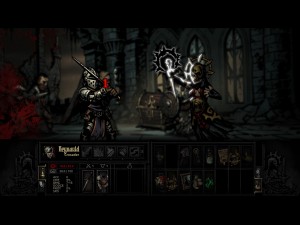One of the most difficult tasks as a game designer is trying to accommodate multiple skill levels in a single game design. Most often the developer will either drive away beginners or experts by making the game too hard or too easy respectively at the start or they will simply ignore one group. But today’s post looks at the concept of a safety net and how it can explicitly or implicitly work to keep multiple skill levels invested.
The Skill Divide:
A safety net when it comes to game design will be defined as the following:
- Safety Net: The margin of error for the player built into the game’s design between success and failure.
One of the hardest elements of designing a game is figuring out how to properly train a player on the game’s rules and mechanics to keep them interested while not being so hard that it drives them away.
The safety net represents the degree of which a challenge can be completed without the need of expert skill; where a player can mess up and still be victorious. As mentioned at the start there are two philosophies when it comes to safety net game design based on whether you are explicitly or implicitly using them. We’ll start with explicit because it’s easier to understand and more prominent for players of all skill levels.
Rewarding Gameplay:
The explicit form of safety net game design is where the developer builds the safety net directly into the game’s progression or challenge system. In this case, every challenge or level of the game has several ways of being beaten based on the player’s skill and mastery of the game.
The classic example is grading the player with bronze, silver and gold medals to measure how well the player did. Essentially the bronze level requires very little player skill and is normally meant for younger or new players. Silver is the average and what someone who is skilled at your game should be able to achieve without any additional training or learning.

The different medals of Action Henk are meant to provide progression for new players and challenges for experts.
Gold however is special; this is the level where you want the gloves to come off and really challenge the player.
Getting gold on a level should require the highest skill that a player can have and in many cases they will have to practice the level before attempting it.
Action Henk is a recent example of this and how the developers have set up different ghosts of varying skill levels to show the player the difference in skill needed to win. Getting a bronze medal is far less demanding than going for gold.
My favorite example of this kind of gameplay and one I bring up a lot is from Banjo Kazooie Nuts and Bolts. Beating a challenge at the bronze level was enough for basic progression and a player could see a lot of the game just by playing it at that level. But there were more rewards for players that mastered the game and tracked down all the collectibles.
Were those collectibles and gold medals vital to beating the game? No. Instead they were a reward and additional challenge for higher level players to go after which novices could ignore or pursue when they were ready. Next up, building a safety net into the game’s design where the player may or may not realize it’s there.
Dodging Failure:
When a safety net is built into the game’s mechanic, they are used as a means to stop the player from being completely punished due to their actions. The most basic example of this would be the use of lives back in the classic days; instead of restarting the game, the player would simply restart the level as long as they had enough lives left.
Safety nets in this method are mainly for newer or novice players to your game and expert players will probably not need them. The point is you want to have a safety net for new players learning your title so that they won’t immediately fail while they are attempting to figure out how your game works and become frustrated.

A safety net mechanic gives the player some way to avoid or mitigate absolute failure . But it’s something that must be tested to avoid being abused.
In the Darkest Dungeon, there is a safety net in the form of “death’s door”. When a character runs out of health, they are not immediately killed but the next amount of damage done will have a chance of killing them.
This gives players a chance to save that character whereas in a more brutal game, they would have simply died the second they hit 0 health.
With this form of safety net design, it is implicit because a great player may never have to use them, but they are there for when things hit the fan or if a new player is trying to learn your game.
Now comes the tough question: How do you design a safety net?
Building the Net:
As with the design being implicitly or explicitly in your game, you need to design how your safety net is going to work; is it going to be a form of progression or something to help out newer players?
With progression, you need to figure out a “par experience” for your game; deciding what is the bare minimum in terms of player skill and understanding needed to beat the base game. From there, you can extrapolate out what would an expert player be able to do and can even set up something easier for beginners to get some sense of progression out of your game.
Taking this further, you can even design master level content which will test even your hardest players. One thing to keep in mind when figuring out balancing, the game should never reach a point of absolute frustration as a form of challenge. In the original version of Diablo 3, the developers when balancing out the difficulty levels basically multiplied the stats of all the enemies for torment, without any examination of player skills or stats. Which lead to a frustrating experience that didn’t really reward players but punished them.

Developing different difficulty settings can be used to provide experiences for multiple skill groups
To help out new players, this is where it’s a bit harder to figure out how to build the safety net, as every video game is different.
You can go as little as designing different difficulty levels, to adding completely new mechanics or systems designed to let players make some mistakes without being completely punished for it.
The main point of concern with this implementation is that the system has to be pronounced enough that new players can make use of it, but not so dependent on the game that it becomes a crutch or holds back expert players. With the Darkest Dungeon, while death’s door is very important, it’s not going to save someone who just throws their party at fights without any regard for tactics.
Spreading the Love:
What’s great about safety net design is that as a designer, it will give you a greater understanding of how your game is balanced at different skill and difficulty levels which in turn, can help make it accessible to more people. But at the heart of this kind of design is figuring out your baseline experience; without it, you won’t have any way to gauge how your playerbase is going through the game.
Playtesting from both novices and experts is key to figuring this out as you need to understand your game from both ends of the spectrum. While this isn’t as important for competitive based titles, games where you want to present a fair challenge to the playerbase can benefit from this kind of thinking.


